
by Laurent Fintoni via flickr
Kate Ellis, Minister for the Status of Women, launched a 12-year national plan last month that is designed to reduce violence against women and children.
The plan is based on research that indicates as many as one in three Australian women will experience physical, sexual and emotional abuse by men during their lifetimes.
The plan expresses the intention to address social norms and practices, rigid beliefs about gender role expectations and cultural values, all of which contribute to a society in which violence against women and children is endemic.
Currently, there are more reported assaults on women by men.
However, what the plan completely neglects to address is that there is also a great deal of anecdotal evidence that women are the primary perpetrators of the emotional abuse of children, with disastrous and long-lasting effects.
Any 12-year national plan to prevent violence against children should include proper and full investigation into this type of child abuse. Why doesn’t this one?
Paucity of empirical research
While there are studies on female violence against male partners, it’s difficult to find current research on the occurrence and effects of maternal emotional abuse on children, and on the adults they become. Research has lagged behind clinical experience, notes the author of this 2007 study and there is a relative paucity of empirical data.
Yet there is a plethora of anecdotal evidence to be found on the long-term effects of maternal emotional abuse on the development of children, and on their adult lives.
There are thousands of personal stories of emotional abuse – maternal bullying, attacks on the young child’s self esteem, the long-term consequences of being raised by a narcissistic mother for whom one is little more than an accessory in public, and an emotional whipping post in private. This clinical term has been colloquially adopted as shorthand for maternal emotional abuse.
There are 10 Google pages dedicated to the term, and a further 10 pages dedicated to maternal emotional abuse.
The term “narcissistic mothers” sits comfortably with increased societal concerns about the “sexualisation” of young children, specifically when young girls are dressed and made up as if they were adult women.
Campaigners such as the Australian Christian Lobby and Melinda Tankard Reist express profound and I believe legitimate concerns about this increasing practise.
However, the elephant in the room is that mothers and female caregivers overwhelmingly purchase and dress young girls in this manner. Reist, the ACL, and many other campaigners apparently find it easier to lay all blame at the door of various media and advertising outlets.
They neglect to mention the responsibility mothers and female caregivers must bear for purchasing these products, and choosing to dress their little girls like adult women.
It’s reasonable to investigate the possibility that such mothers and caregivers are indeed abusively acting out their own narcissistic and unrealised desires through their little girls.
The stories of maternal abuse are out there
The long-term consequences of maternal abuse
Maternal abuse is a broad predictor of adult dysfunction in the areas of relatedness, identity, affect regulation, abandonment concerns, and borderline and anti-social features. Briere and Rickards found that “high paternal support did not appear to reduce the negative effects of maternal abuse”.
On the matter of childhood sexual abuse the authors note: For example, the current results suggest that childhood sexual abuse, although significantly related to impaired self-capacities, is second to the effects of childhood maternal abuse. (emphasis mine.) Such data does not mean that sexual abuse is less than psychologically toxic, but rather that another form of child maltreatment—one less addressed in the literature—may be even more traumagenic. Additional study is clearly indicated to determine the reasons (whether biological, attachment-related, or sociocultural) for this specific effect.
The area is almost a professional and wider societal no-go zone – so thoroughly has feminism succeeded in creating the belief that the perpetration of intra-familial abuse is a primarily male phenomenon. Yet there are many, many women and men who experientially know this is not so. Why don’t feminists who are in a position to do so, validate this experiential knowledge, and clamour for empirical research?
W Kierski addresses professional reluctance in his paper ‘Female violence: can we therapists face up to it?” This link appears to come and go, but Google “female violence” and you’ll find this paper, and 11 further pages with both scholarly and anecdotal material on the topic.
The reality many feminists resist
Together with society’s reluctance to consider that mothers are anything but good, as well as the difficulties of identifying what can seem, compared to physical injuries, a nebulous concept of emotional maltreatment, this area of abuse receives far less attention than others. It is described by some mental health professionals as the “hidden” form of maltreatment.
Unpopular as this notion might be, it’s my opinion that feminism has created a simplistic but powerful binary narrative in which men are perpetrators and women are victims. This has now hardened into a rigid gender role expectation.
There is very little room in this story for the reality of female violence against male partners, against other women, and against children, unless a woman murders them or otherwise physically abuses them in a manner worthy of media attention. These women are then cast in the role of the extremely bad mother, and frequently subjected to vitriolic public attacks.
Yet victims can also be perpetrators, regardless of their gender. This is the reality many feminists resist, to the detriment of all of us, and in particular, our children.
The halcyon days of brilliant feminist scholarship and subsequent ground breaking cultural change are over. The once inspirational ideology has degenerated into little more than housework and lipstick cat fights.
The first feminist clique to address the issue of maternal emotional abuse, and lobby for urgent and comprehensive research into its occurrences and effects, will receive my support. Feminists have always led the way in addressing domestic violence perpetrated by men – now it’s time for women to address intimate partner violence and child abuse by women.
This is not something women would accept being addressed by men. It can only be seriously addressed by women ourselves.
What we know so far is that there is very good reason to investigate. If further study bears out the 2007 Briere and Rickards’ data, we are looking at a profoundly significant determiner of adult well being, one at least equal in its probabilities of long-term damage to male perpetrated domestic violence, and the sexual assault of children.
Facing up to and addressing maternal emotional abuse is quite possibly feminism’s next frontier, and if the sisters baulk at it and stay with the trivia, then what is feminism really good for in 2011?
WHAT THE NATIONAL PLAN SAYS
The definition of domestic violence used in the new 12 year National Plan announced by Minister for the Status of Women, Kate Ellis, last month, does not acknowledge any familial abuse other than that perpetrated by men:
Domestic violence refers to acts of violence that occur between people who have, or have had, an intimate relationship. While there is no single definition, the central element of domestic violence is an ongoing pattern of behaviour aimed at controlling a partner through fear, for example by using behaviour which is violent and threatening. In most cases, the violent behaviour is part of a range of tactics to exercise power and control over women and their children, and can be both criminal and non-criminal.
Read: “in most cases the central element of domestic violence is violent male behaviour” towards women and “their children.”
Female violence against intimate male partners, well researched for quite some years now, and alleged by some researchers to be as common as male violence, and often differently expressed, is inexplicably omitted.
Maternal violence of any kind against children is omitted, though paternal or male violent behaviours against “women’s” children are included in the definition.
Further in the document we find this:
It [the Plan] will look at building positive attitudes and beliefs, social norms and ways for organisations to confront controlling, macho, aggressive and ultimately violent behaviour.
Read: “Violent male behaviour, because with “macho” in there, what else could it be?
The vision of the National Plan is that: ‘Australian women and their children live free from violence in safe communities.’
Read: “free from male violence” as female violence is not acknowledged in the definition.
And then: Values and Principles are: Responses to children exposed to violence prioritise the safety and long term well-being of children.
Read: “Responses to children exposed to male violence’, as female violence is not acknowledged in the definition.
And then: Protecting Children: Physical abuse, emotional maltreatment, neglect, sexual abuse and witnessing family violence are now all recognised as forms of child abuse and neglect. In April 2009, COAG endorsed Protecting Children is Everyone’s Business—National Framework for Protecting Australia’s Children 2009–2020. This framework is aimed at reducing child abuse and neglect in Australia over time. The National Plan and the National Framework are designed to work in tandem to bring about positive change for women and children experiencing violence.
Read “ experiencing male violence.”
The linking of the two plans suggests the National Framework might also be based on an interpretation of domestic violence as male violence. I haven’t checked. I hope I’m wrong.
And: The primary objective of perpetrator interventions is to ensure the safety of women and their children.
Read: “Male perpetrator interventions”
The examples are numerous. See:
http://www.fahcsia.gov.au/sa/women/progserv/violence/nationalplan/Pages/default.aspx
We need a plan that addresses violence perpetrated on children by both women and men that includes physical abuse, emotional maltreatment, neglect, sexual abuse and witnessing family violence.
We need research into maternal emotional abuse of children. We need research into female intimate violence. We need a plan that acknowledges the realities of domestic violence, not one based entirely on out-dated stereotypes of gendered violence.
After forty years of treating domestic violence as a male only phenomenon, there has been no significant decrease in violence and child abuse statistics. This indicates that there is something we are not investigating, and female violence against intimate partners and children is very likely it.
Tags: Abuse, adult dysfunction, adult survivors of child abuse, Australian Christian Lobby, Child abuse, COAG, domestic violence, emotional maltreatment, family violence, female abuse of intimate partners, Feminism, Intimate relationship, Kate Ellis, maternal abuse, Melinda Tankard Reist, mental health, narcissistic mothers, Office of the Minister for the Status of Women, paternal abuse, perpetrator interventions, Physical abuse, post traumatic stress disorder, Psychological abuse, Sexual abuse



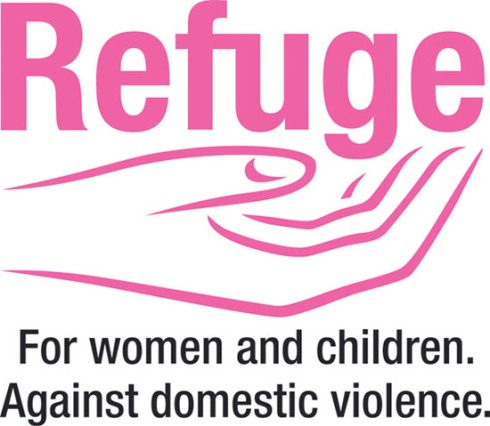
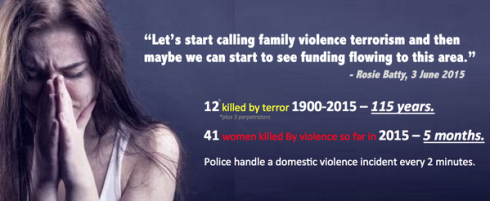



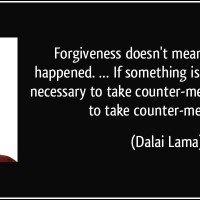
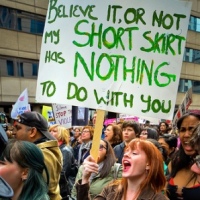

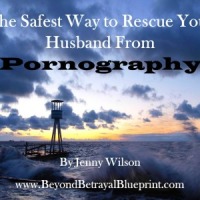

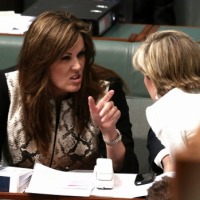

































Recent Comments